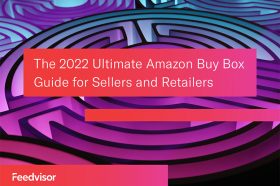Resources - Blog
Amazon Catalog Analysis: How to Use Your ASINs to Drive Growth

Stay on top of the latest e-commerce and marketplace trends.
Taking a comprehensive approach to knowing and managing your catalog is a necessary step to unlocking profitability on Amazon. High-level catalog analysis is important for many reasons, but most notably because it helps you understand your overall account performance at a big-picture view. Additionally, it helps you quickly identify areas of risk, improve productivity, focus on the most important aspects of your business, and utilize your time efficiently.
Not only is it important to maintain adequate stock, but you also need to make sure it does not become stale inventory or sit stagnant on the storage shelf for long periods of time, is the product your customer was looking for, and lasts until the next shipment from your supplier. Not only does keeping ample stock impact your Buy Box share, but it also affects your performance metrics – if you are constantly stocking out, you run the risk of customers not returning to your store for repeat purchases and receiving negative customer reviews.
With a thorough catalog analysis, you will be able to slice and dice your catalog into different groups and identify a customized strategy by item in order to reach your store’s full potential.
Understanding Your Selling and Non-Selling Items
When you go into Seller Central and see all of your active items, it is evident that some of them are selling and others are not. As your business scales and your catalog increases in size, the percentage of selling SKUs decreases. With a larger operation, it will also become more difficult for you to manage the number of SKUs you have. Be sure to ask yourself if all of the items in your catalog are relevant in order to assess what actions need to be taken and in what order.
Once non-selling items have been identified, they should be divided into two groups: non-selling items with inventory and non-selling items without inventory. For the ones without inventory, if they have not sold in a long time and you know you will not be replenishing them, you should clean them up so that the stale inventory can be liquidated.
You do not want these items to take up any more of your time or steer you away from your higher-priority business goals. It is a good practice to review these items every three to six months to ensure that you are not paying money for storage fees on items whose activity has come to screeching halt.
For the non-selling items that do have inventory, it is vital to get to the bottom of why they are not selling. Is it traffic or conversion? Is the item receiving enough views or is the conversion rate low? If the latter, this could mean that your Buy Box share is low (potentially due to a changing competitive environment) or the listing should be optimized with stronger content and images.
If the reason is a change in competition, adjust your prices accordingly if you can. These items should be reviewed at least once a month so that you can step in and pinpoint exactly why the items aren’t selling and take action from there.
The Importance of the 80/20 Rule
The 80/20 rule refers to the industry rule of thumb that 20% of your selling items generate 80% of your sales, give or take. The number of top selling items will vary depending on several factors, such as your business’s size and product categories.
The 80/20 rule allows you to hone in on specific items that you want to spend time on optimizing and helps you focus and prioritize your time more effectively, in order to have the strongest impact on your performance.
Prioritizing Impact vs. Effort
We recommend breaking down your focus and priorities into four areas: low effort, high effort, low value, and high value. It will be important to assess which bucket your actions will fall into in order to prioritize against your business goals.
- Low effort, high value: These actions are “low-hanging fruit,” the quick wins that should be performed immediately, such as replenishing your most profitable items.
- High value, high effort: Items that fall into this quadrant are strategic and require extensive planning, such as developing a relationship with a supplier overseas that has a long lead time but great potential for the long run.
- Low effort, low value: These will be actions that you will want to skip or at least move further down the list of priorities for the time being, such as identifying items at the end of the product life cycle and assigning them a liquidation strategy to reassess every two weeks.
- Low value, high effort: These items are time-consuming tasks that take a lot of time or manpower to accomplish and don’t always necessarily yield results that move the needle. An example of this would be evaluating a backup plan to move items when liquidation tactics were unsuccessful the first time around.
Think through the impact that each action is going to have on your business and how much effort it will take to get it accomplished, to make sure that you are allocating your time and resources properly. Having a catalog management strategy and knowing your ASINs intimately will prime your Amazon business for success, as you will be able to more accurately set targets, prioritize, take action, and measure results.
Tracking your profitable, non-profitable, selling, and non-selling items regularly will help you understand the deep connection between sales and margins and how you can optimize both simultaneously.
Learn what Feedvisor can do for your business.
When you partner with Feedvisor, you automatically receive access to our true, AI-driven technology and hands-on team of e-commerce experts. Contact one of our team members today to learn more about our end-to-end solution for brands and large sellers on Amazon, Walmart, and e-marketplaces.



